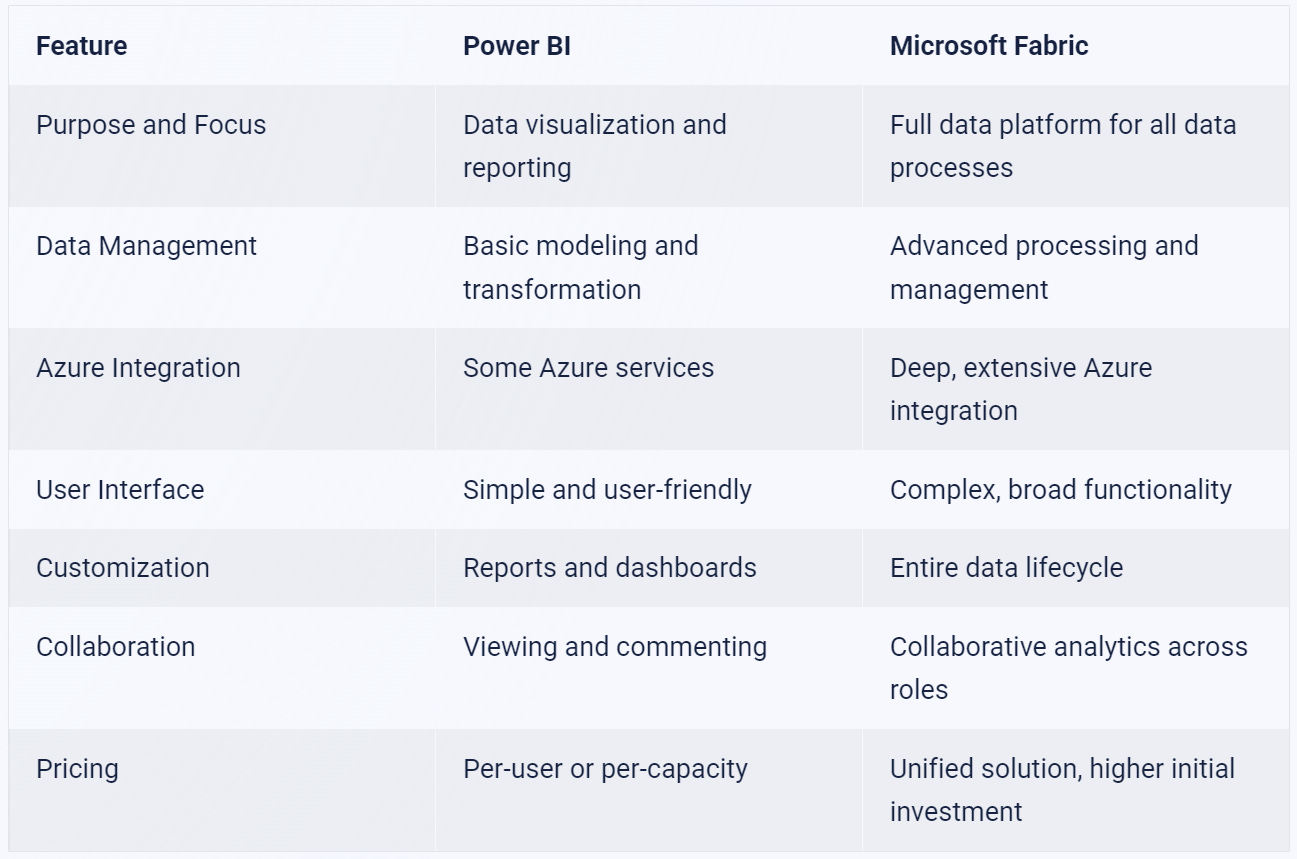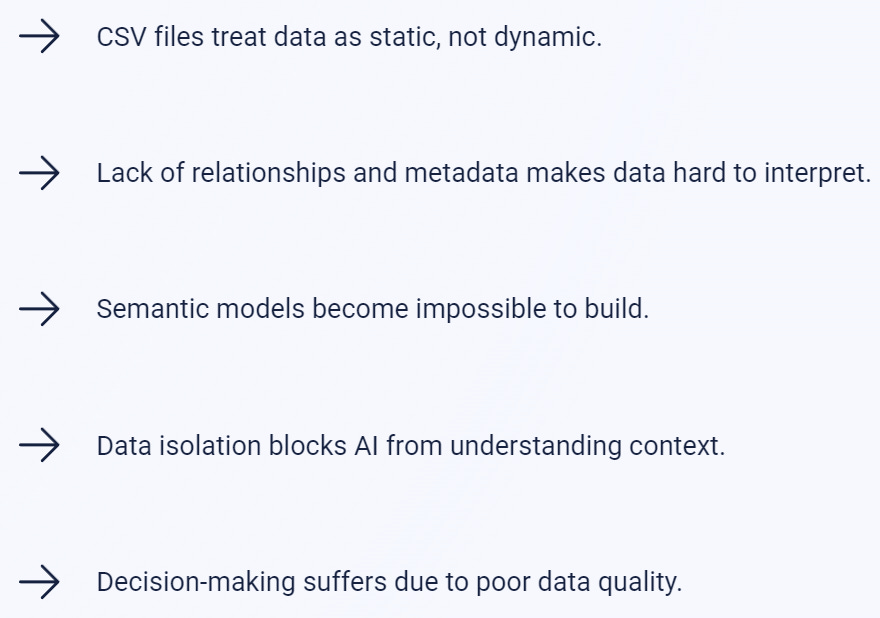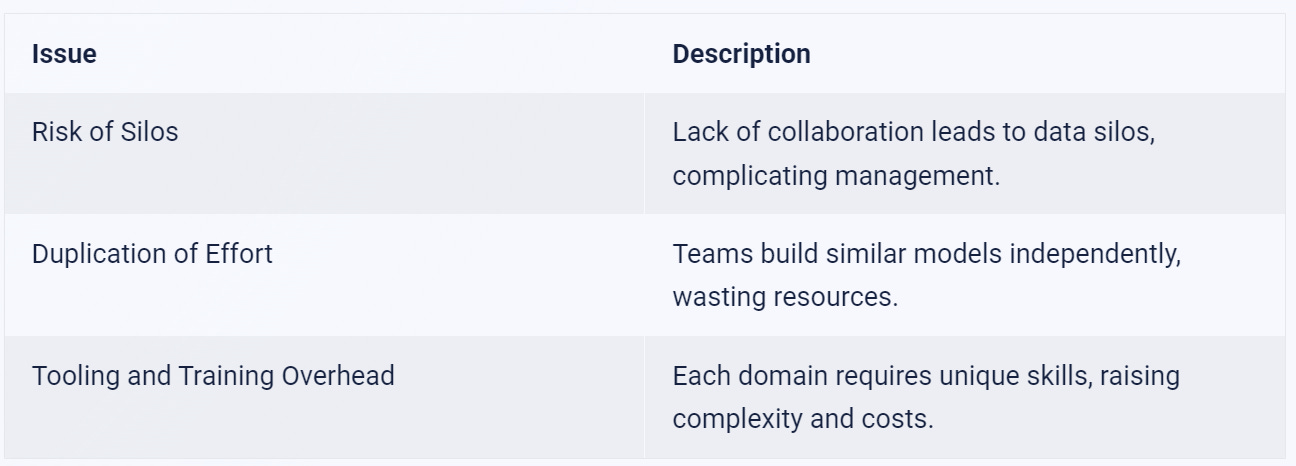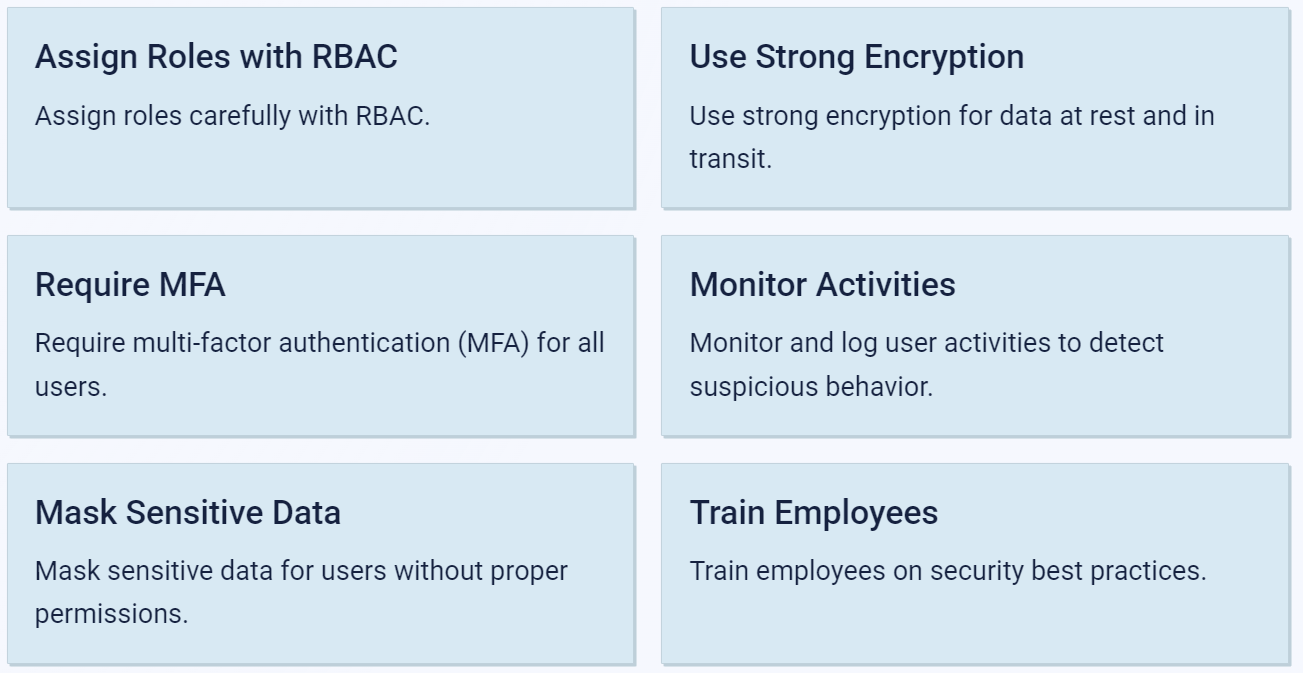Hidden Architecture Mistakes in AI Projects
You may expect Microsoft Fabric to simplify your AI journey, but reality often reveals hidden architecture mistakes that slow progress. When you ignore semantic gaps or mishandle context, your AI models lose accuracy. Fragmented data sources and static knowledge systems create unpredictable outcomes. The CSV graveyard problem in Fabric disrupts data integration, while poor refresh strategies complicate compliance. Following Fabric Dataflows Gen2 best practices and DP-600 Fabric techniques helps you avoid pitfalls. Understanding how Microsoft Fabric works internally and enabling real-time alerting in Fabric ensures your platform supports AI success.
Key Takeaways
Recognize hidden architecture mistakes in AI projects to avoid costly errors. Focus on planning and governance to ensure success.
Implement a solid data refresh strategy. Automate refresh cycles to keep data current and reduce operational delays.
Define clear domain boundaries early in your project. This fosters collaboration and prevents resource duplication among teams.
Utilize Microsoft Fabric’s features effectively. Leverage Dataflows Gen2 and semantic models to enhance data quality and accessibility.
Treat Power BI as the main output layer of your data platform. Ensure that every decision made upstream reflects in the analytics presented to users.
Fabric Hype vs. Reality
Simplicity Promises
You hear a lot about how Microsoft Fabric will make your data journey easier. The marketing highlights seamless integration, low-code solutions, and a one-stop shop for all your data needs. You expect to connect your data, build reports, and activate AI with just a few clicks. The promise of democratized data access sounds appealing, especially if you want your whole team to work with data.
Note: Many organizations believe Fabric will streamline data engineering and analytics because of its intuitive interface. You may expect real-time intelligence and easy adoption.
However, the reality often feels different. Teams face hidden costs and unexpected complexity. You discover that low-code does not mean no training. Vendor lock-in can limit your flexibility. Customization sometimes requires skills your team does not have yet. The dream of a one-stop shop can turn into a struggle with fragmented data and slow adoption.
Here is a quick look at the difference between what you expect and what you encounter:
Complex Decisions Hidden
When you start using Fabric, you realize that many architectural choices remain hidden at first. You must decide how Fabric fits into your existing data architecture. You need to choose how much you use Fabric for data preparation, modeling, and presentation. You balance data reusability with flexibility for report creators. You also select the platforms where users will access content, such as the Fabric portal or Microsoft Teams.
You manage the structure for maintaining your data architecture, either centralized or decentralized.
You identify key data sources and types of data to acquire.
You select the right connectivity and storage modes for each use case.
You encourage reusability through lakehouses, warehouses, and shared semantic models.
You promote reusability in data preparation logic using pipelines and dataflows.
You may want real-time intelligence, but fragmented data landscapes and the lack of a comprehensive solution force you to build custom architectures. These decisions often stay hidden until you face challenges in scaling, governance, or AI activation. You must recognize these complexities early to avoid costly mistakes and ensure your Fabric project supports your AI goals.
Common Misconceptions About Fabric
Not Just Power BI++
Many people think Microsoft Fabric is just an upgrade to Power BI. You might expect the same tools with a few new features. This idea leads to confusion and missed opportunities. Fabric is much more than a reporting tool. It supports the entire data lifecycle, from ingestion to advanced analytics. You can manage, process, and share data across your organization. The platform offers deeper integration with Azure and more customization options.
Here is a table that shows the key differences between Power BI and Microsoft Fabric:
Self-Optimizing Myth
You may hear that Fabric manages itself and needs little oversight. This myth can lead to costly mistakes. Fabric requires active governance and careful configuration. You must control tenant settings and align features with your architecture. Many organizations worry about integration with their existing data management tools. You need to monitor usage, track data lineage, and plan capacity.
Beyond BI Teams
Fabric is not just for BI teams. You need new skills and roles to succeed. Business analysts must understand OneLake and work with unified semantic models. Data engineers develop pipelines and optimize storage. IT and governance teams manage security, monitor costs, and track data lineage.
You can see that Fabric scales for all organizations, not just large enterprises. The platform offers flexible pricing and user-friendly design. You need a team with diverse skills to unlock its full potential.
Inside Fabric Architecture
OneLake Foundation
You start your journey in Microsoft Fabric with OneLake. This unified storage layer acts as a single data lake for your entire organization. OneLake supports many data formats and scales automatically as your data grows. You do not need to manage separate data lakes for each department. This foundation streamlines access and ensures that every team works from the same source of truth.
OneLake eliminates the overhead of managing multiple storage systems and supports efficient collaboration.
Lakehouse & Warehouse Link
You connect Lakehouse and Warehouse in Fabric to improve data accessibility. Every lakehouse automatically creates a SQL analytics endpoint. This feature gives you lightweight data warehousing without duplicating data. You can use Spark for ETL or ELT transformations and run DDL or DML operations at the gold layer. This integration lets you access data quickly in Power BI and other analytics tools, making your workflows faster and more flexible.
Semantic Models Layer
Semantic models help you interpret data the same way across all AI and analytics workloads. These models create a user-friendly environment and support both centralized and self-service BI. You use business terms, so AI can answer natural language questions and deliver consistent insights. Over 35 million people use Power BI semantic models each month, and most Fortune 500 companies rely on them for accurate reporting.
Pipelines & Dataflows Gen2
You use Pipelines and Dataflows Gen2 to automate and scale your data processing. With over 150 connectors, you can bring in data from many sources. Power Query transformations let you clean and shape data without writing code. You save results as Delta tables in OneLake, making them available for all workloads. Incremental refresh and scheduling keep your data up to date. Good governance and collaboration features help your team avoid hidden architecture mistakes.
Notebooks & AI Runtime
Notebooks in Fabric let you use SQL and Python together. You can choose PySpark for big data or lightweight Python for smaller jobs. Notebooks support language mixing, so you can query, clean, and model data in one place. AI functions allow you to summarize, classify, or translate text with just a line of code. You do not need to be a machine learning expert to use these features. Security and governance keep your data safe as you explore advanced analytics.
Hidden Architecture Mistakes in Fabric Projects
You may think technical glitches cause most failures in Microsoft Fabric, but architectural and governance errors often create deeper problems. These hidden architecture mistakes can disrupt your AI projects and increase costs. Let’s explore the most frequent pitfalls you should watch for.
CSV Swamp Warehouses
You might feel tempted to use CSV files for quick data storage. This shortcut leads to a static environment, where data sits in cold storage and loses its dynamic value. When you rely on CSVs, you miss out on relationships, metadata, and semantic models. Over time, your warehouse becomes a swamp—isolated, hard to interpret, and nearly impossible for AI to reason about. You cannot leverage your data for decision-making, and your analytics lose accuracy.
Tip: Use structured formats and enforce schema to keep your warehouse clean and AI-ready.
Poor Refresh Strategy
You may overlook the importance of a solid refresh strategy. If you refresh data too often, you waste resources and drive up costs. If you refresh too rarely, your reports show outdated information. Manual refreshes create operational delays and increase the risk of errors. You need to plan your refresh cycles based on business needs and system capacity.
Note: Automate refreshes and align them with your business requirements to avoid hidden architecture mistakes.
Domain Boundaries Ignored
Ignoring domain boundaries creates governance and scalability issues. When you do not define clear domains, teams work in silos and duplicate efforts. You waste resources and create inconsistent models. Each domain needs specific skills and support, which increases complexity and management costs.
Callout: Define domain boundaries early to foster collaboration and reduce duplication.
Weak Observability
Weak observability leaves you blind to system performance. You cannot answer questions about how your system behaves under stress. Problems surface in production without warning, and you miss opportunities to act proactively. Blind spots in monitoring increase the risk of failures and slow down troubleshooting.
Unanswered questions about performance under stress.
Problems appear unexpectedly in production.
Blind spots prevent proactive action.
Increased risk of system failures.
You can improve observability by embedding monitoring into every stage of your data lifecycle. Track metrics and validate quality during development and deployment.
Dataflows Gen2 Misuse
Misusing Dataflows Gen2 exposes your organization to security and performance risks. Trusted users may push sensitive data to untrusted stores. The Mashup Engine operates in the cloud, bypassing corporate firewalls and data loss prevention policies. You face risks of data exfiltration through anonymous web requests or cross-source joins. Performance suffers when you do not use query folding or handle data types properly.
Alert: Follow best practices for Dataflows Gen2 to protect your data and optimize performance.
You need to recognize these hidden architecture mistakes before they impact your AI projects. Good planning, clear domain boundaries, strong observability, and secure dataflows help you build a future-proof Fabric architecture.
Data Quality & Semantic Gaps
Inconsistent Results
You may notice that your reports and analytics sometimes show different results for the same data. This inconsistency often happens when teams use Fabric tools in different ways or manage dependencies poorly. If you run SQL queries like SELECT TOP (1) without an ORDER BY clause, you can get unpredictable answers. When you join tables or reference the same source multiple times, the optimizer may process your data in unexpected ways, especially with large Delta tables.
Tip: Materialize subqueries and avoid using
SELECT *on wide tables. SparkSQL can help you get more reliable results.
Here are some common data quality challenges you might face:
You can address these problems by profiling your data and using Fabric’s transformation tools to clean and standardize it.
Record Duplication
Record duplication can cause confusion and waste resources. You might see this problem when users export files outside the governed environment, creating multiple versions of the same data. This leads to conflicting reports and makes it hard to trust your analytics.
If you follow these steps, you can reduce duplication and keep your data trustworthy.
Metadata Issues
Metadata helps you find and understand your data. When metadata is missing or inconsistent, teams spend hours searching for the right information. You may struggle with scanning and cataloging data, which slows down your projects.
Challenges in metadata scanning
Issues with data cataloging
Need for consistent metadata management
Note: Microsoft Purview Data Catalog can centralize your metadata and make assets easier to discover.
Poor metadata management complicates governance and compliance. You need accurate metadata to ensure your organization meets regulations and keeps data assets organized.
Security & Governance Risks
Data Protection Flaws
You need to protect your data at every stage in Microsoft Fabric. Many organizations struggle with data quality, privacy, and security gaps. Sometimes, access permissions do not persist across all Fabric services. This can lead to accidental data exposure. Users may even retrieve restricted data from reports if permissions are not handled correctly at the semantic model level.
Here is a table that highlights common data protection flaws and ways to address them:
Tip: Use Microsoft Purview to scan data, apply sensitivity labels, and enforce policies for better governance.
Access Control Weakness
You must secure access to sensitive data. Weak access controls can expose your organization to unauthorized users. Role-Based Access Control (RBAC) helps you manage permissions at both workspace and item levels. You should always follow the least privilege principle. Only give users the minimum permissions they need.
A unified security framework built on Microsoft Entra ID supports user authentication and identity management. Granular access controls, such as Row-Level Security (RLS) and Column-Level Security (CLS), help restrict data access further.
Compliance Gaps
You face many compliance challenges in Fabric. The unified data lake can become a single point of failure. You need a Zero Trust approach to protect against breaches. Always check that your data storage and cross-region data flows meet local data sovereignty laws. Work closely with your legal team to stay compliant.
Centralized data management increases risk if not protected.
Local regulations may require special handling of data.
Regular monitoring and auditing help you catch policy violations early.
Note: Set up a Center of Excellence to monitor access, enforce policies, and ensure regulatory adherence.
Future-Proof Fabric Architecture
Data Ingestion Strategy
You need a strong data ingestion strategy to keep your Fabric architecture ready for future AI needs. Start by choosing connectors that match your data sources. Use incremental refresh to avoid loading everything at once. This keeps your system fast and saves resources. Edge computing helps you process data close to its source, which reduces delays. You can use serverless computing to handle large workloads without worrying about infrastructure. Regular audits help you spot inefficiencies and security risks early.
Tip: Schedule audits every quarter to catch problems before they grow.
Domain Mapping
Clear domain mapping helps you organize your data and teams. Assign each business area its own workspace and data models. This reduces confusion and prevents duplication. You should define boundaries so teams do not overlap or create silos. Use lifecycle management to keep your domains updated with new features. When you map domains well, you make collaboration easier and support growth.
Pipeline Design
Design your pipelines for flexibility and reliability. Use automation to move and transform data. Pipelines should support both batch and real-time processing. Performance monitoring tools like Azure Monitor help you track how well your pipelines work. You can fix problems quickly when you see issues early. Update your pipelines often to stay current with new Fabric features.
AI Activation Layer
The AI activation layer brings intelligence to your Fabric architecture. You can use built-in AI to automate data processing and decision-making. Notebooks let you run Python and SQL for advanced analytics. Serverless computing supports AI workloads without extra setup. When you activate AI, you unlock new insights and make your data more valuable.
Automate tasks with Fabric’s AI features.
Use notebooks for custom analytics.
Run AI workloads with serverless computing.
Note: A future-proof architecture grows with your needs and supports new AI tools as they arrive.
Power BI’s Role in Fabric
Output Layer Shift
You may know Power BI as a reporting tool. In Microsoft Fabric, Power BI becomes the main output layer for your data platform. You use Power BI to present insights from your lakehouse, warehouse, and semantic models. This shift means you do not just build dashboards. You deliver trusted analytics that connect to every part of your data estate.
Power BI now sits at the end of your data pipeline.
You use it to visualize, share, and act on data from Fabric.
Reports and dashboards become the final product, not just a side feature.
Tip: Treat Power BI as the window into your entire Fabric architecture. Every decision you make upstream affects what users see in Power BI.
RLS & Governance
You need strong governance to protect your data. Power BI supports Row-Level Security (RLS), which lets you control who sees what data. You set rules so users only access the information they need. This helps you meet privacy and compliance requirements.
You should review access regularly. You can use Microsoft Entra ID to manage identities and permissions. Good governance in Power BI keeps your data safe and builds trust with your users.
Semantic Models as Products
You create semantic models to define business logic and calculations. In Fabric, you treat these models as products. You design, test, and release them with care. Teams across your company use these models for reports, AI, and analytics.
Build semantic models with clear definitions.
Version and document your models.
Share models across domains for consistency.
Note: When you treat semantic models as products, you improve data quality and make analytics more reliable. This approach supports both self-service BI and advanced AI projects.
You now see why strategic architecture and strong governance matter for AI success in Microsoft Fabric. Treat Fabric as a platform, not just a tool. When you address Hidden Architecture Mistakes early, you set your organization up for reliable analytics and future AI projects. Want to learn more? Subscribe, check out the podcast, or read the next article for deeper insights.
FAQ
What is the most common hidden mistake in Fabric projects?
You often overlook domain boundaries. When you skip defining clear domains, you create silos and duplicate work. This mistake makes your data harder to manage and slows down your AI progress.
How do you keep your data quality high in Fabric?
You should profile your data regularly. Use Fabric’s transformation tools to clean and standardize your data. Set up rules to detect duplicates and missing values. Good data quality supports reliable analytics and AI.
Why does Power BI play a new role in Fabric?
Power BI now acts as the main output layer. You use it to present insights from your entire data platform. This shift means your reports reflect every upstream decision, making governance and data quality more important than ever.
How can you avoid CSV swamp warehouses?
Tip: Store your data in structured formats like Delta tables. Enforce schema and use semantic models. This approach keeps your warehouse dynamic and ready for AI, instead of turning into a static data swamp.























